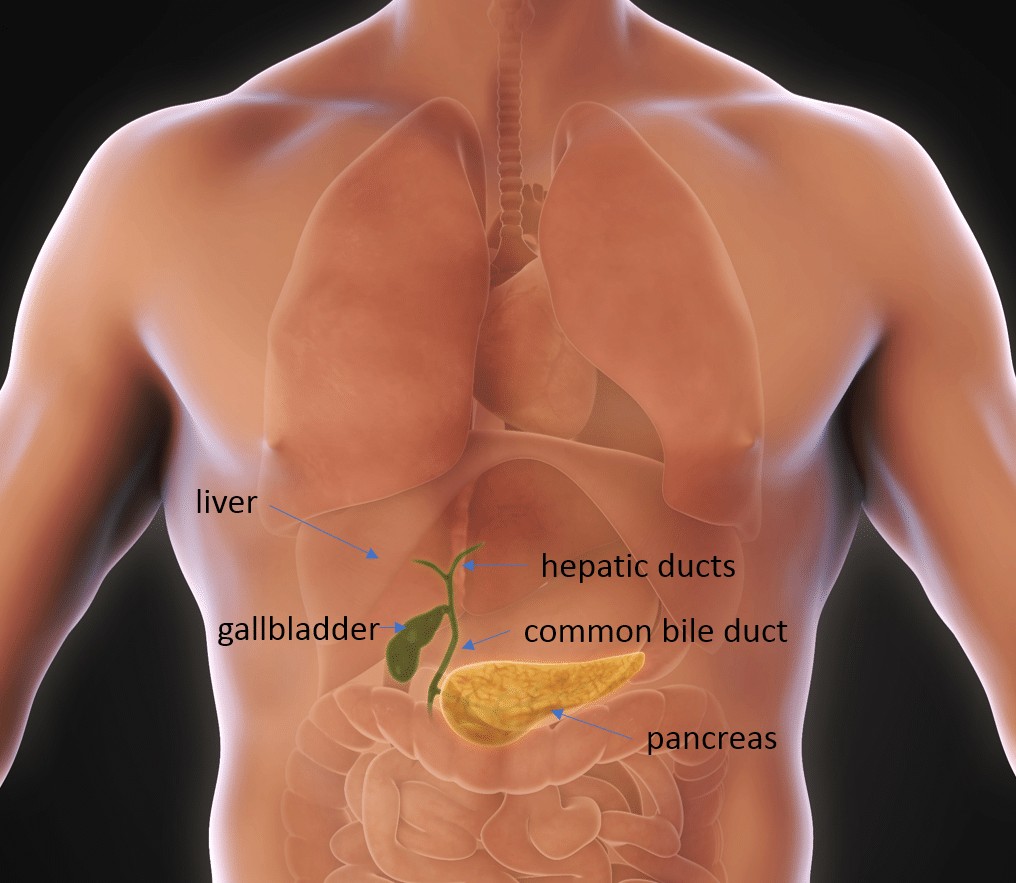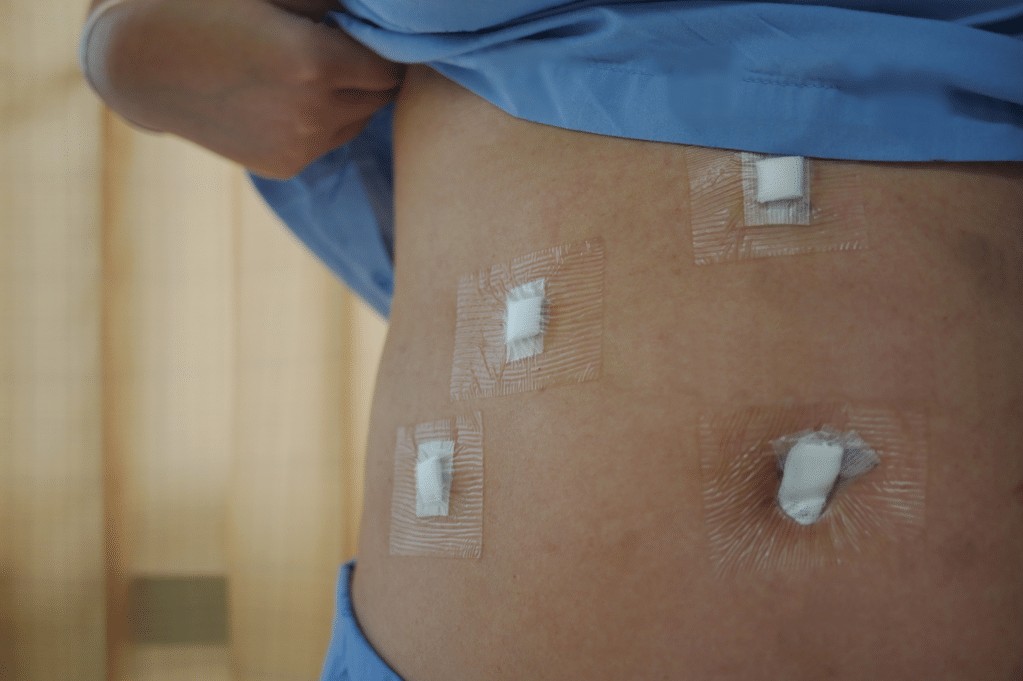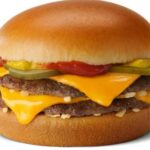Gallstones and gallbladder problems can lead to significant discomfort and impact your quality of life, but at HOW.EDU.VN, we provide access to leading experts who can offer personalized guidance and effective solutions. Seeking expert advice can provide a clear path toward effective management and improved well-being, with advanced diagnostic techniques and personalized treatment strategies. Explore preventative measures and innovative treatments for cholecystitis, biliary colic, and other gallbladder ailments.
1. What is the Gallbladder and How Gallstones Form
The gallbladder is a small, pear-shaped organ located under the liver in the upper right abdomen, which plays a crucial role in digestion by storing and concentrating bile produced by the liver, releasing it into the small intestine to aid in the digestion and absorption of fats. Gallstones are hardened deposits of digestive fluid that can form in the gallbladder, ranging in size from as small as a grain of sand to as large as a golf ball, often causing significant pain and digestive issues.
1.1 Anatomy and Function
Understanding the anatomy and function of the gallbladder is essential for grasping the impact of gallbladder issues on overall health. The gallbladder is connected to the liver and small intestine through a series of ducts, forming the biliary system. Bile, which consists of cholesterol, bile salts, bilirubin, and water, aids in the digestion of fats by emulsifying them, making it easier for enzymes to break them down.
1.2 Gallstone Formation
Gallstones form when bile contains too much cholesterol, bilirubin, or not enough bile salts. Several factors can contribute to this imbalance, including:
- High Cholesterol Levels: When the liver excretes more cholesterol than bile can dissolve, the excess cholesterol can crystallize and form stones.
- High Bilirubin Levels: Bilirubin is a waste product produced when the liver breaks down old red blood cells. Conditions such as liver damage or blood disorders can cause the liver to produce excess bilirubin, leading to the formation of pigment gallstones.
- Concentrated Bile: If the gallbladder doesn’t empty completely or often enough, bile becomes overly concentrated, contributing to the formation of stones.
1.3 Types of Gallstones
There are primarily two types of gallstones:
- Cholesterol Stones: These are the most common type, usually yellow-green in color, and primarily made of hardened cholesterol.
- Pigment Stones: These are smaller, darker stones made of bilirubin and are more common in people with liver diseases or blood disorders.
2. Causes and Risk Factors of Gallbladder Problems
Several factors increase the risk of developing gallstones and other gallbladder problems. Understanding these risk factors can help individuals make informed lifestyle choices and seek appropriate medical advice.
2.1 Demographic and Genetic Factors
- Age: The risk of developing gallstones increases with age, particularly after 40.
- Gender: Women are twice as likely as men to develop gallstones, possibly due to the effects of estrogen on cholesterol levels.
- Family History: A family history of gallstones increases the likelihood of developing them.
- Ethnicity: Certain ethnic groups, such as Native Americans and Mexican Americans, have a higher prevalence of gallstones.
2.2 Lifestyle and Dietary Factors
- Diet: A diet high in fat and cholesterol and low in fiber can increase the risk of gallstones.
- Obesity: Being overweight or obese increases cholesterol levels in bile, contributing to gallstone formation.
- Rapid Weight Loss: Losing weight rapidly can cause the liver to release more cholesterol into the bile, increasing the risk of gallstones.
- Fasting: Prolonged fasting can reduce gallbladder contractions, leading to bile concentration and gallstone formation.
2.3 Medical Conditions and Medications
- Diabetes: People with diabetes often have higher levels of triglycerides, a type of fat, which can increase the risk of gallstones.
- Liver Disease: Conditions like cirrhosis can impair liver function and increase bilirubin levels, contributing to pigment stone formation.
- Blood Disorders: Conditions like sickle cell anemia can lead to increased bilirubin production and pigment gallstones.
- Medications: Certain medications, such as hormone replacement therapy and oral contraceptives, can increase the risk of gallstones.
2.4 Expertise and personalized strategies with HOW.EDU.VN
Navigating the complexities of gallbladder health requires more than just generic advice, and HOW.EDU.VN offers a unique advantage by connecting you with leading experts who can provide insights tailored to your individual needs. Our team of experienced doctors and specialists stays at the forefront of gallbladder research and treatment, ensuring that you receive the most effective and up-to-date care, offering personalized strategies that take into account your unique medical history, lifestyle, and preferences, empowering you to make informed decisions about your health.
3. Symptoms of Gallbladder Problems
Recognizing the symptoms of gallbladder problems is crucial for early diagnosis and treatment. Symptoms can vary depending on the specific condition, but some common indicators include:
3.1 Biliary Colic
Biliary colic is characterized by sudden, intense pain in the upper right abdomen, often after eating fatty foods. The pain typically lasts from 30 minutes to several hours.
3.2 Cholecystitis
Cholecystitis is inflammation of the gallbladder, often caused by gallstones blocking the cystic duct. Symptoms include:
- Severe, persistent abdominal pain
- Fever
- Nausea and vomiting
- Tenderness to the touch in the upper right abdomen
3.3 Cholangitis
Cholangitis is an infection of the bile ducts, usually caused by a blockage from gallstones. Symptoms include:
- Severe abdominal pain
- High fever and chills
- Jaundice (yellowing of the skin and eyes)
3.4 Gallstone Pancreatitis
Gallstones can block the pancreatic duct, leading to pancreatitis. Symptoms include:
- Severe upper abdominal pain that may radiate to the back
- Nausea and vomiting
- Fever
3.5 Acalculous Biliary Pain
Some individuals experience gallbladder-related pain without the presence of gallstones. This condition, known as acalculous biliary pain, may be caused by gallbladder dysfunction or other underlying issues.
4. Diagnosing Gallbladder Issues
Accurate diagnosis is essential for effective treatment of gallbladder problems. Several diagnostic tests are available to assess the gallbladder and biliary system.
4.1 Ultrasound
An abdominal ultrasound is often the first test ordered to diagnose gallbladder problems. It uses sound waves to create images of the gallbladder and can detect gallstones with high accuracy.
4.2 CT Scan
A computed tomography (CT) scan provides detailed images of the abdomen and can help identify inflammation, infection, or other abnormalities in the gallbladder and surrounding structures.
4.3 HIDA Scan
A hepatobiliary iminodiacetic acid (HIDA) scan assesses gallbladder function. A radioactive tracer is injected into the bloodstream, and its movement through the liver, gallbladder, and small intestine is tracked. This test can help diagnose cholecystitis and other gallbladder disorders.
4.4 Endoscopic Ultrasound (EUS)
Endoscopic ultrasound combines endoscopy and ultrasound to provide detailed images of the gallbladder and bile ducts. It is often used to detect small gallstones or other abnormalities that may be missed by other imaging tests.
4.5 Magnetic Resonance Cholangiopancreatography (MRCP)
Magnetic resonance cholangiopancreatography (MRCP) is a non-invasive imaging technique that uses magnetic resonance imaging (MRI) to visualize the bile ducts and gallbladder. It is particularly useful for detecting gallstones in the bile ducts and identifying other biliary abnormalities.
5. Treatment Options for Gallbladder Problems
Treatment for gallbladder problems depends on the specific condition and its severity. Options range from conservative management to surgical intervention.
5.1 Lifestyle Modifications
For mild symptoms or asymptomatic gallstones, lifestyle modifications may be recommended:
- Dietary Changes: A low-fat diet can reduce gallbladder stimulation and alleviate symptoms.
- Weight Management: Maintaining a healthy weight can reduce the risk of gallstone formation.
- Regular Exercise: Physical activity can improve overall health and reduce the risk of gallbladder problems.
5.2 Medications
Medications may be used to manage symptoms or dissolve gallstones:
- Pain Relievers: Over-the-counter or prescription pain relievers can help manage biliary colic.
- Ursodeoxycholic Acid: This medication can dissolve small cholesterol gallstones over time, but it is not effective for pigment stones or large stones.
5.3 Cholecystectomy
Cholecystectomy, or gallbladder removal surgery, is the most common treatment for symptomatic gallstones and cholecystitis. It can be performed using either laparoscopic or open techniques.
5.3.1 Laparoscopic Cholecystectomy
Laparoscopic cholecystectomy is a minimally invasive procedure performed through several small incisions in the abdomen. A camera and specialized instruments are inserted to remove the gallbladder. Benefits include:
- Smaller incisions
- Less pain
- Shorter recovery time
5.3.2 Open Cholecystectomy
Open cholecystectomy involves a larger incision in the abdomen to remove the gallbladder. It may be necessary in cases of severe inflammation, infection, or other complications. Recovery time is typically longer than with laparoscopic cholecystectomy.
5.4 Endoscopic Retrograde Cholangiopancreatography (ERCP)
Endoscopic retrograde cholangiopancreatography (ERCP) is a procedure used to remove gallstones from the bile ducts. A flexible endoscope is inserted through the mouth, esophagus, and stomach into the small intestine. Dye is injected into the bile ducts, and X-rays are taken to locate the stones. Instruments can then be passed through the endoscope to remove the stones.
5.5 Navigating the complexity with HOW.EDU.VN
Seeking specialized medical care can be overwhelming, and our commitment at HOW.EDU.VN is to help you navigate this complexity by providing access to an extensive network of experts from various fields, ensuring that you receive comprehensive and customized care, with experienced professionals dedicated to supporting you every step of the way. The platform offers resources and personalized guidance, enabling you to make informed decisions about your health and well-being.
6. Life After Gallbladder Removal
Most people can live a normal, healthy life without a gallbladder, and after gallbladder removal, the liver continues to produce bile, which flows directly into the small intestine. Some individuals may experience temporary digestive changes:
6.1 Digestive Changes
- Diarrhea: Some people experience diarrhea after gallbladder removal, particularly after eating fatty foods. This usually resolves within a few weeks or months.
- Bloating and Gas: Bloating and gas may occur due to changes in bile flow and digestion.
- Dietary Adjustments: Eating smaller, more frequent meals and avoiding high-fat foods can help manage digestive symptoms.
6.2 Long-Term Considerations
- Diet: A balanced diet with moderate fat intake is recommended.
- Hydration: Staying hydrated can help prevent constipation.
- Follow-Up: Regular follow-up with a healthcare provider can help monitor any long-term effects of gallbladder removal.
7. Preventing Gallbladder Problems
While not all gallbladder problems can be prevented, certain lifestyle choices can reduce the risk:
7.1 Healthy Diet
- Low-Fat Diet: Limit intake of saturated and trans fats.
- High-Fiber Diet: Include plenty of fruits, vegetables, and whole grains.
- Regular Meals: Avoid skipping meals or prolonged fasting.
7.2 Weight Management
- Maintain a Healthy Weight: Obesity increases the risk of gallstones.
- Avoid Rapid Weight Loss: Lose weight gradually to prevent increased cholesterol release.
7.3 Regular Exercise
- Physical Activity: Engage in regular physical activity to improve overall health and reduce the risk of gallbladder problems.
7.4 Medical Considerations
- Medication Review: Discuss medications with your doctor to identify potential risks.
- Monitor Cholesterol Levels: Keep cholesterol levels in check through diet and, if necessary, medication.
8. The Expertise Advantage with HOW.EDU.VN
Facing gallbladder issues can be daunting, and access to reliable, expert advice is critical. HOW.EDU.VN connects you with a network of leading doctors and specialists who provide personalized guidance and support. By choosing HOW.EDU.VN, you gain access to:
- Expert Doctors: Our network includes experienced gastroenterologists, surgeons, and other specialists who are leaders in their fields.
- Personalized Advice: Receive tailored recommendations based on your individual health needs and circumstances.
- Comprehensive Support: From diagnosis to treatment and recovery, we provide comprehensive support to help you manage your gallbladder health.
- Convenient Access: Connect with experts from the comfort of your own home, saving time and travel costs.
8.1 Expertise Highlight
Dr. Emily Carter, Gastroenterologist
Dr. Carter is a board-certified gastroenterologist with over 15 years of experience. She specializes in diagnosing and treating gallbladder and biliary disorders, offering patients the most advanced and effective care.
- Education: MD, Harvard Medical School
- Residency: Massachusetts General Hospital
- Fellowship: Johns Hopkins Hospital
- Specialization: Gallbladder and biliary disorders
| Name | Specialization | Education |
|---|---|---|
| Dr. Emily Carter | Gastroenterologist | MD, Harvard Medical School |
| Dr. James Wilson | General Surgeon | MD, Stanford University |
| Dr. Maria Garcia | Internal Medicine Doctor | MD, University of California SF |


9. Innovations in Gallbladder Treatment
Advancements in medical technology have led to innovative approaches for treating gallbladder problems:
9.1 Robotic Cholecystectomy
Robotic cholecystectomy uses a surgical robot to assist in gallbladder removal. The robot provides enhanced precision and control, potentially leading to better outcomes and faster recovery.
9.2 Single-Incision Laparoscopic Cholecystectomy (SILC)
Single-incision laparoscopic cholecystectomy (SILC) is a minimally invasive technique performed through a single incision in the belly button. This approach offers the potential for reduced scarring and faster recovery.
9.3 Natural Orifice Transluminal Endoscopic Surgery (NOTES)
Natural orifice transluminal endoscopic surgery (NOTES) is an experimental technique that involves removing the gallbladder through a natural orifice, such as the mouth or vagina. This approach has the potential to eliminate the need for abdominal incisions.
10. Addressing Common Concerns About Gallbladder Surgery
Many people have concerns about gallbladder surgery. Understanding these concerns and having access to expert information can help alleviate anxiety.
10.1 Will I Be Able to Digest Food Properly Without a Gallbladder?
Yes, the liver will continue to produce bile, which flows directly into the small intestine, allowing you to digest food properly.
10.2 How Long Will It Take to Recover From Surgery?
Recovery from laparoscopic cholecystectomy typically takes one to two weeks. Open cholecystectomy may require a longer recovery period of four to six weeks.
10.3 What Are the Risks of Gallbladder Surgery?
Risks of gallbladder surgery are rare but can include bleeding, infection, injury to the bile ducts, and post-cholecystectomy syndrome.
10.4 Will I Need to Follow a Special Diet After Surgery?
A balanced diet with moderate fat intake is recommended. Some people may need to avoid high-fat foods temporarily to manage digestive symptoms.
10.5 Will My Digestive Problems Go Away After Surgery?
Surgery can often cure digestive problems related to gallbladder issues, but some individuals may experience ongoing symptoms that require management.
11. FAQ: Your Gallbladder Questions Answered
11.1 What is the main function of the gallbladder?
The gallbladder stores and concentrates bile produced by the liver, releasing it into the small intestine to aid in the digestion of fats.
11.2 What are the common symptoms of gallbladder problems?
Common symptoms include abdominal pain, nausea, vomiting, indigestion, fever, and jaundice.
11.3 How are gallstones diagnosed?
Gallstones are typically diagnosed using an abdominal ultrasound, CT scan, HIDA scan, EUS, or MRCP.
11.4 What is cholecystectomy?
Cholecystectomy is the surgical removal of the gallbladder, usually performed laparoscopically.
11.5 Can I live a normal life without a gallbladder?
Yes, most people can live a normal, healthy life without a gallbladder. The liver continues to produce bile, which flows directly into the small intestine.
11.6 What is the recovery time after laparoscopic cholecystectomy?
Recovery from laparoscopic cholecystectomy typically takes one to two weeks.
11.7 Are there any dietary changes needed after gallbladder removal?
A balanced diet with moderate fat intake is recommended. Some people may need to avoid high-fat foods temporarily to manage digestive symptoms.
11.8 What are the risk factors for developing gallstones?
Risk factors include age, gender, family history, obesity, rapid weight loss, diet, and certain medical conditions.
11.9 How can I prevent gallbladder problems?
Preventive measures include maintaining a healthy weight, eating a balanced diet, and engaging in regular physical activity.
11.10 When should I see a doctor for gallbladder problems?
See a doctor if you experience severe abdominal pain, nausea, vomiting, fever, or jaundice.
12. Take Control of Your Gallbladder Health with HOW.EDU.VN
At HOW.EDU.VN, we understand the challenges of managing gallbladder issues. Our mission is to empower you with the knowledge and access to expert care you need to make informed decisions and improve your health. Whether you’re seeking answers, need personalized advice, or require comprehensive support, our team of leading doctors and specialists is here to help.
12.1 Connect with the Experts
Don’t let gallbladder problems disrupt your life, and by contacting HOW.EDU.VN, you will gain access to a network of leading doctors and specialists who provide personalized guidance and support. With expert insights and customized strategies, you can effectively manage your gallbladder health and improve your well-being.
12.2 How to Get Started
- Visit our website at HOW.EDU.VN
- Browse our directory of expert doctors and specialists.
- Schedule a consultation to discuss your specific needs and concerns.
- Receive personalized recommendations and support from our team of experts.
Take the first step towards better gallbladder health today. Contact HOW.EDU.VN and discover the expertise and personalized care you deserve.
Address: 456 Expertise Plaza, Consult City, CA 90210, United States
WhatsApp: +1 (310) 555-1212
Website: how.edu.vn
Don’t navigate the complexities of gallbladder health alone. Our team is dedicated to helping you every step of the way, ensuring you receive the best possible care.
